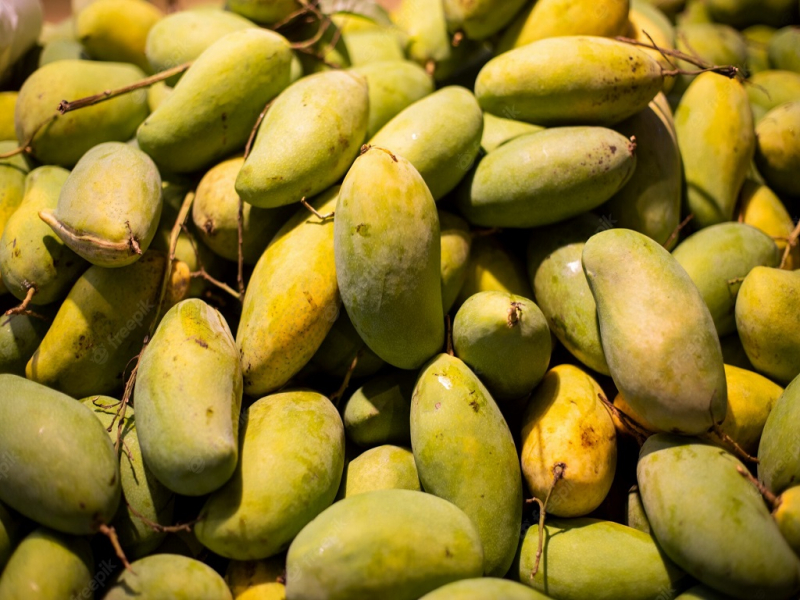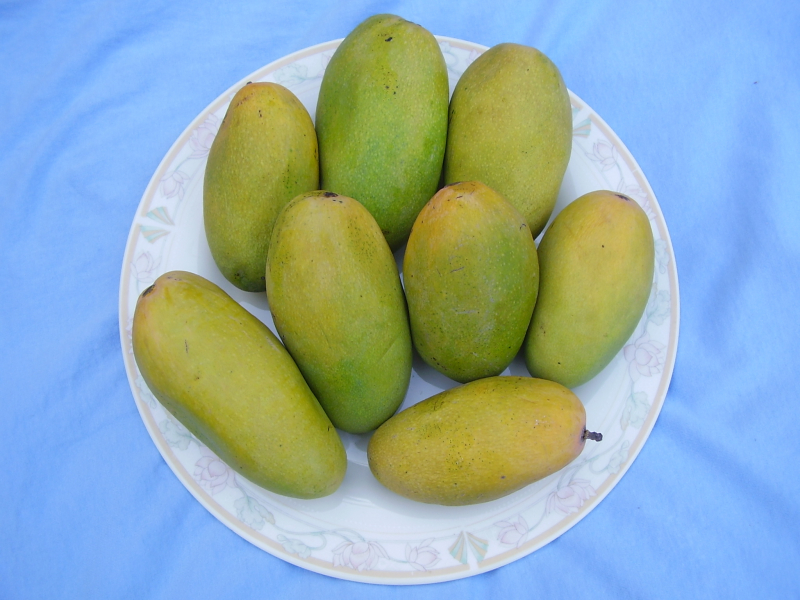Dasheri Mango

Dasheri mangoes, botanically classified as Mangifera indica, are an Indian variety belonging to the Anacardiaceae family. Sweet fruits were discovered in the 18th century and are one of the oldest and most revered varieties in Northern India. Dasheri mangos are a popular seasonal summer fruit used in both raw and prepared recipes. They are known for their sweet flavor and juicy, smooth flesh. The Dasheri mango is also known by the regional names Dusari, Dashehari, Dusehri, and Dussehri. In India, Dasheri mangoes are renowned for helping to create new mango varietals. Due to its superior growth traits, the fragrant cultivar was chosen as the parent fruit of many mango varieties in Northern India, including Mallika and Amrapali.
Dasheri mangoes are small to medium-sized fruits with an elongated, straight oval shape and blunt, curving ends, measuring 9 to 15 centimeters in length on average. When ripe, the semi-thick, smooth, leathery, and faintly waxy skin, which is initially light green to yellow-green in color, turns a golden yellow. The medium-sized stone is enclosed within the orange flesh, which is soft, succulent, and nearly fiberless beneath the surface. Dasheri mangoes have a strong perfume that is tropical and nectarine-like. The fruit's flesh is incredibly sweet and has notes of fruit, the tropics, and a hint of tang.











